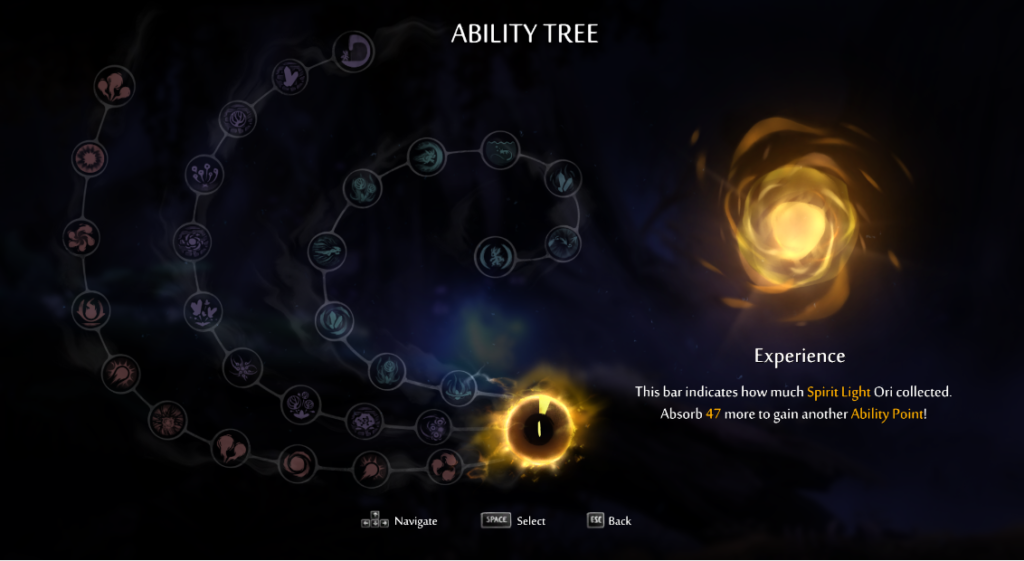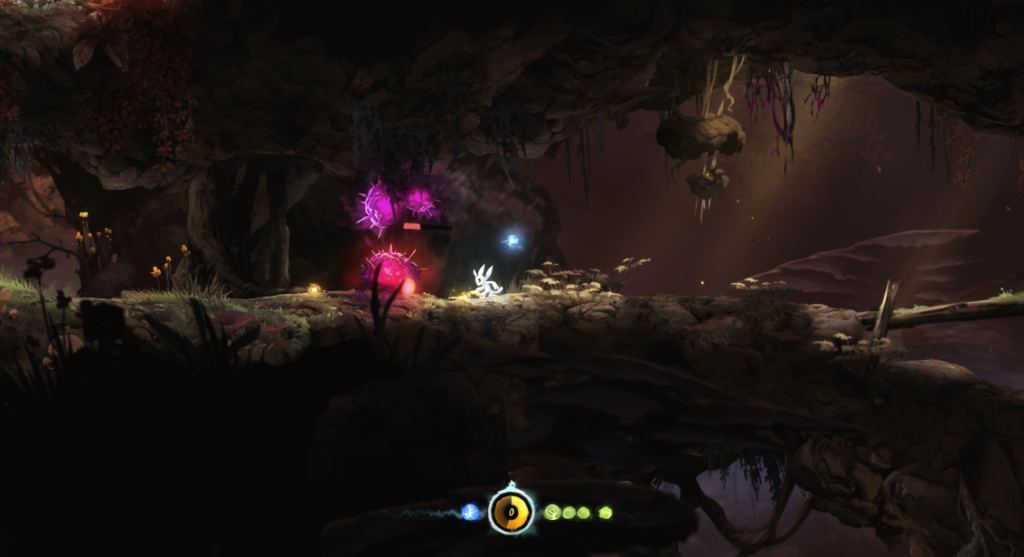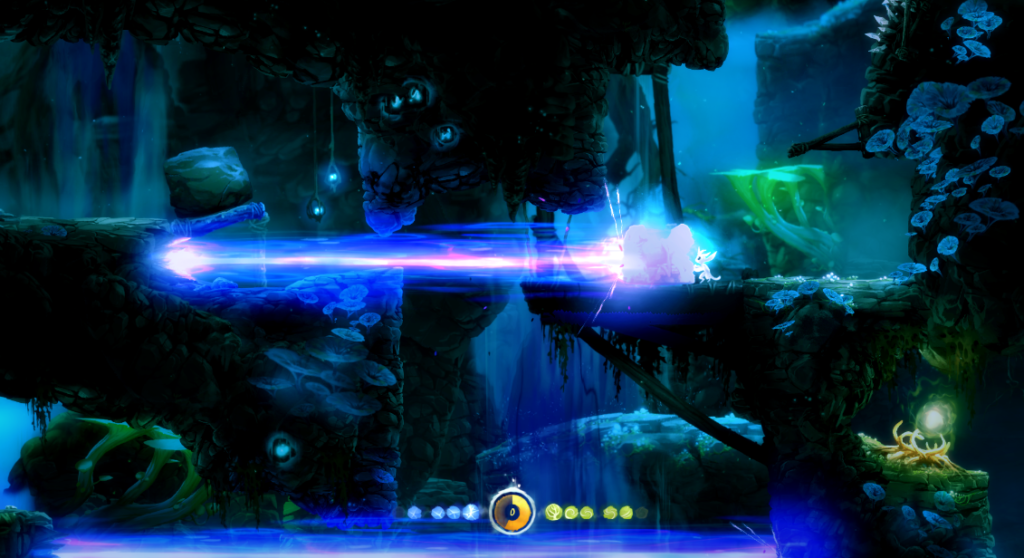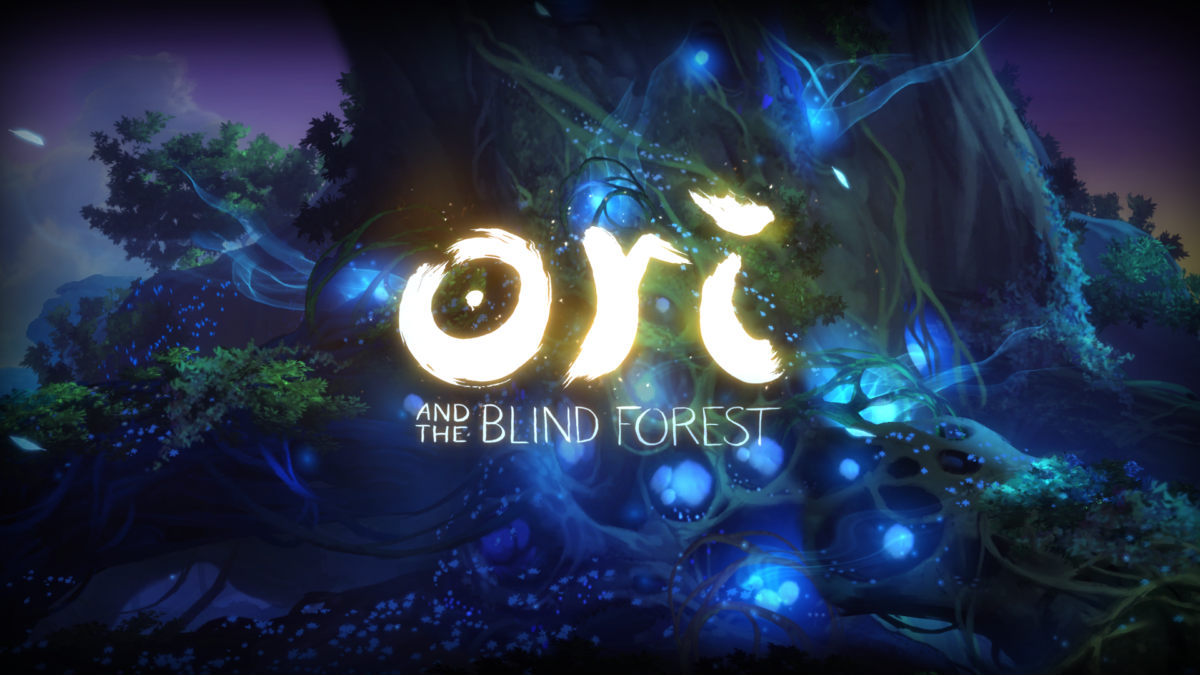Looking for the Quick Review?
I’m not very good at challenging platformers. It’s better you learn that now than later. I can try my hand at a few levels of Mario, for sure, but something like Ori and the Blind Forest is different.
I’m sure I’ve lost some of you already – if you’re big into platformers, Ori probably isn’t a particularly difficult game for you. Its jumps and platforming aren’t nearly as challenging as something like Celeste, and its puzzles and levels are far more forgiving than something like Hollow Knight.

To be fair, though, Ori and the Blind Forest is more than child’s play. Beating it takes some level of skill, and it’s not the sort of platformer you can idly blast through in the background as you descend through conspiracy theory rabbit holes on YouTube your first time through (assuming you’re even remotely like me – platformer gods feel free to challenge me on this).
At its heart, Ori and the Blind Forest is a Metroidvania (meaning abilities and items you earn throughout your journey will unlock or make accessible previously inaccessible areas) and platformer with a particular focus on movement. You’ll start with your typical cute little jumps, but finding the shrines hidden in each of the game’s regions will unlock new abilities to add to an expanding repertoire. Some of these abilities are built to beat up baddies, but most significantly expand Ori’s range of mobility in one way or another.

Simple hopping and running gives way to double and wall-jumping, which eventually lead in to super jumping and a really neat launch mechanic that sees Ori using objects, enemies, and projectiles as launching pads for renewed midair momentum. The varied set of movement abilities feels really nice and allows for satisfying freedom of exploration. In true Metroidvania fashion, new abilities open access to previously closed-off regions, and returning to a familiar area with an updated set of abilities opens the door to new rewards, provided you’re skilled enough to get to them.
The game’s enemies are pretty simple and easy enough to dispatch – the challenge they pose comes more from obstruction than fisticuffs. Most of Ori‘s foes are background accompaniments to the main stage of platforming and movement, but they also serve as one of the game’s few examples of adjustable challenge. Changing the difficulty setting won’t make jumping or climbing any harder or easier, but it will alter how effective enemies are at getting in your way. If you’re a platformer at heart and combat isn’t your thing, a lower difficulty might help you out. If you’re a fighter who’s less talented in jumping over gaps and hanging onto walls, you won’t be as lucky.

But difficulty isn’t the only way to alter the level of challenge; killing enemies and locating special pick-ups awards experience that contributes toward the earning of points that can be used to unlock perks from the game’s fairly linear three-pronged ability tree.
Perk effects vary, from options like increasing the damage of Ori’s attacks and allowing her to breathe underwater to decreasing the amount of energy it takes to create a save point and bestowing upon her the hallowed triple jump.
The process of leveling and claiming perks isn’t advertised as a way to make the game easier, but in practice, that’s exactly what it is. Each of Ori‘s puzzles and areas can be completed without any investment in perks, and picking them up only serves to streamline the journey. I wouldn’t be surprised to learn that some challenge junkies eschew the system entirely.

If I’ve somehow failed so far to make clear that that’s not me, allow me to admit that I did not invoke this opportunity for additional difficulty. Having more opportunities to save the game means less anxiety, which outweighs any other reward you could give me, in this game or in life at large.
Still, even as I gratefully gobbled up the perks the game made available to me, by the end of it, I hadn’t come that close to unlocking all of them. I never managed, for example, to unlock the triple jump, which seemed like a bummer but really serves as an indicator that maximizing Ori’s movement potential is far from a necessity for victory. For struggling players, though, it might be super helpful.

Making it this far into the review having hardly touched on Ori and the Blind Forest‘s visual and auditory aesthetic seems criminal. Oops. They’re far and away the most endearing and impressive parts of the game. For all of my trouble with jumping and dodging, I never felt bored with Ori‘s environments.
Each of the game’s regions sets itself apart through unique combinations of color, animation, and music. Forests feel lush and alive, newly-abandoned ruins feel bizarre and mysterious, and the final region of the game evokes the appropriately stressful feelings of tension and danger.
Ori feels like a part of her world, and that world is one so beautifully composed that I can’t help but identify with her quest to save it from Koru, the great owl who threatens to starve this forest of its radiant light.

But as much as I enjoyed and felt immersed in the game (and always wound up wanting to come back for more), I warned you that I’m not good at this kind of game, and that means I didn’t get through it without a major bone to pick.
Ori suffers from what I’m going to call “excessive enforced trial and error” (because it sounds just pretentious enough). This is something I think the devs were probably explicitly going for, and I think it might be something fans of the game and the genre really enjoy. For me, it’s a headache.
To start, let me clarify that I don’t think trial and error is bad — it’s a game design fundamental. A lot of games either explicitly attempt to encourage effortful failure or do it accidentally by being games. In games like Ori, the difference for me is first that the trial and error is almost mandatory – more than once, I felt I couldn’t have known that a hazard was approaching and adequately responded to it without first having succumbed to it. Overcoming likely failure is one thing, but here, it feels mandatory.

Second, the amount of mandatory trial-and-error seems, at times, excessive. The game’s storyline is punctuated by escape sequences, these high-tension, beautifully-drawn, perfectly-scored scenes of peril where your only goal is to escape an environment as it collapses in on you. Thematically, these are excellent. They’re also the most frustrating part of the game.
I spent a ton of time in each of them, progressing until I reached one of those enforced trial-and-error points, appropriately died, and started all over again. When I tried again and passed the obstacle that had slain me before, I felt the triumph the devs intended, but soon thereafter came another enforced trial-and-error point. I’d die to that and, again, start all over again, having to navigate now both the first and the second.
This isn’t a design scheme the developers of Ori and the Blind Forest came up with. It’s pretty common in challenging platformers. And again, fans of that genre might really enjoy it. They might argue that learning to overcome these obstacles is the point. It’s not just having the skill to get through the maze that matters, it’s managing your working memory well enough to remember what hazards come at you and when. If you could get through it all on the first run, you’d lose something unique.

I think that’s fair, and I don’t blame folks for being entranced by these sequences. But for me, there’s something incredibly irritating about getting past a difficult section of the game after being required to start all over from the beginning and knowing without a doubt that there’s another one ahead. Failure doesn’t feel likely, it feels inevitable, and that, for me, takes away from the little victory of getting past the first obstacle.
In the end, I beat Ori and the Blind Forest on normal difficulty in 10 hours (including start screen idle time). I haven’t gone back yet to check out what I’ve missed, and I’m sure there’s a lot of it. I know better than to expect completion in a game like this, but I still think it’d be neat to return to the forest having significantly beefed up Ori’s mobility. This game exudes effort in every area of its presentation, and it feels wrong not to witness as much of it as I can.
Quick Review
Game: Ori and the Blind Forest
Developer: Moon Studios
Published by: Microsoft Studios
Available for: Windows PC, Nintendo Switch, Xbox One

CONTENT
Microtransactions: None
Tedium: None
Violence: Cartoon
Content: Heartwarming
FEATURES
- Challenging, mobility-focused platformer
- Metroidvania-style gated progression
- Beautiful environments

WHAT I LIKED
- Stunning & immersive world
- Mellow atmosphere
- Movement is fun and engaging
CONCERNS
- Fast-paced platforming sequences may be difficult for casual players and non-fans of the genre
- Conversely, more hardcore platformer fans may be disappointed by a short and forgiving experience.

WHO’S IT FOR?
Ori and the Blind Forest is a perfect adventure for casual-to-adept platformer fans and a beautiful, if brief, diversion for more experienced stalwarts of the genre. If you’re looking for a challenging puzzle game that’s light on the puzzles but heavy on gorgeous aesthetics, you absolutely cannot go wrong with Ori and the Blind Forest.
Alternatively, if you’re in search of a game that’s as easy on the brain and hands as it is on the eyes, or if you’re a die-hard difficult game junkie looking for the next very tough platformer, this one may not be for you.

